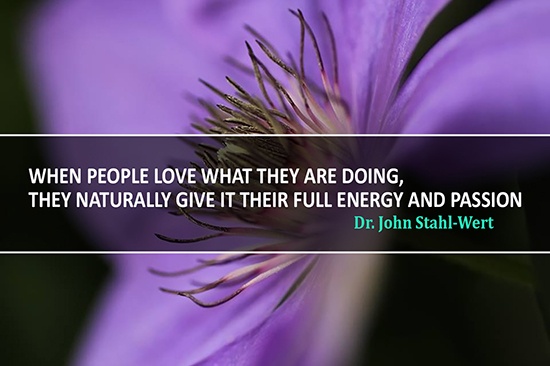At the heart of serving leadership is a point of view about the human person, namely, that people are your organization’s greatest treasure. This point of view requires a change in the minds and hearts of leaders who are accustomed to thinking of their people as tools; even our accounting system labels people a “liability” on the balance sheet! The people who work for us are an asset, not a liability, and that is to say the very least.

Explore Each Person’s Strengths
In an earlier post, we emphasized the importance of getting to know each of your team members so that you can better serve them. One of the most important areas of knowledge about a person is knowledge about that person’s strengths. Strengths are those tasks that the person performs well and, importantly, loves doing. Both criteria—capability and passion—must be present to call something a strength.
When people love what they are doing, they naturally give it their full energy and passion. The serving leader finds ways to match work with the people who love doing it and who do it very well.
[Tweet "The serving leader finds ways to match work with the people who love doing it."]
Serving leaders explore each person’s strengths by first observing what they do and by identifying what they do best without much support or coaching. The serving leader next carries on a series of conversations to identify what people love doing and what they would like to do more often.
Align Strengths with Team Responsibilities
The president and CEO of a leading provider of clinical information systems spoke to me recently about a human capital catastrophe that thankfully never happened. “Back in the small company days,” he started, “one of our employees, Bob, was responsible for the software developers. On a daily and weekly basis, the developers would have to check in their code, and get feedback on what they were developing and how it worked with the system, and so on.”
“This was all a real drag on Bob, and initially we thought he just wasn’t management-level material. But, going through the strengths process, and rethinking the alignment of people onto teams, we found that Bob has a brilliant mind for software architecture, and an understanding of the macro market in terms of where the software should go and where the market is going.”
Freeing Bob from one role on the team in order to better position him to serve the company resulted in what the company now refers to as the “5.0 Release” of their new software platform, a breakthrough that positions the company for 10x growth in institutional customers.
It is essential that leaders and their team members identify each person’s strengths, and then match those individual strengths with the work to be done. At times, managers and executives might think of this process as “too soft.” Work, after all, is work, and people should dig deep and get the job done! It’s true that work is work, and everybody needs to dig deep. However, strengths are an asset that should not be wasted. Nowhere else in our disciplined operations would we jam misfit parts into our product. The small investment required to become expert at building on strengths repays the company and everybody involved many times over.
Promote Continuous Growth and Development
In Gallup’s seminal Q12 survey, which examines employee engagement in organizations, several of the Q12 (Twelve Questions) related powerfully to Building on Strength.
- Question 3: At work, do you have the opportunity to do what you do best?
- Question 6: Is there someone at work who encourages your development?
- Question 11: In the last six months, has someone at work talked to you about your progress?
- Question 12: In the last year, have you had opportunities to learn and grow?
Identifying an employee’s current strengths is key to assuring they get “to do what they do best.” However, this work does not replace the need for continuous growth and development. Research shows that productive employee development focuses on building on strengths and promoting the discovery of new strengths for development.
[Tweet "Identifying an employee’s current strengths is key to assuring they get 'to do what they do best.'"]
We do this, primarily, by building new opportunities and challenges into our employee’s work plan. This requires some stretch effort on the part of the employee. It can be work that the person has not performed in the past or additional responsibilities that require taking a strength to a higher level. An example of this type of growth would be enlisting the person as a coach or teacher of others.
At first, many people are reluctant to change—because of a fear of failure or reprimand—but with the right encouragement and support, the result of taking on and winning at a new challenge propels the person to new heights of performance and satisfaction. A less obvious benefit of continuous growth opportunities is seen in the longevity of employment enjoyed by organizations that do this well. Often, a star performer will leave an employer for a new assignment, not because they were unhappy with their employer or with their compensation, but because they wanted a new challenge.
Leaders and managers can build successful teams based on the strengths of their people, once they learn how to identify such strengths—both a person’s competency and their passion. Teams then can be gathered by positioning each person into the service of the other team members, and all of them together in service to the goals and objectives they must achieve. Adding stretch assignments and growth goals into each person’s work plan promotes the continuous growth of your greatest assets, likely ensuring those greatest assets are on your team for many years to come.
Photo by Gina Wilkes

